Cover
Preface
Contents
Notation and Symbols
Acronyms
1. Introduction
What is this book about?
Highlights of this book
Notes and References
Problems
2. Linear Algebra
Linear subspaces
Eigenvalues and eigenvectors
Matrix inversion formulas
Invariant subspaces
Vector norms and matrix norms
Singular value decomposition
Semidefinite matrices
Notes and references
Problems
3. Linear Systems
Descriptions of linear dynamical systems
Controllability and observability
Observers and Observer-based controllers
Operations on systems
State-space realizations for transfer matrices
Multivariable system poles and zeros
Notes and references
Problems
4. H2 and H-infty Spaces
Hilbert spaces
H2 and H-infty spaces
Computing L2 and H2 norms
Computing L-infty and H-infty norms
Notes and references
Problems
5. Internal Stability
Feedback structure
Well-posedness of feedback loop
Internal stability
Coprime factorization over RH-infty
Notes and references
Problems
6. Performance Specifications and Limitations
Feedback properties
Weighted H2 and H-infty performance
Selection of weighting functions
Bode's gain and phase relation
Bode's sensitivity integral
Analyticity constraints
Notes and references
Problems
7. Balanced Model Reduction
Lyapunov equations
Balanced realizations
Model reduction by balanced truncation
Frequency-weighted balanced model reduction
Notes and references
Problems
8. Uncertainty and Robustness
Model uncertainty
Small gain theorem
Stability under unstructured uncertainties
Robust performance
Skewed specifications
Classical control for MIMO systems
Notes and references
Problems
9. Linear Fractional Transformation
Linear fractional transformations
Basic principle
Redheffer star products
Notes and references
Problems
10. mu and mu Synthesis
General framework for system robustness
Structured singular value
Structured robust stability and performance
Overview of mu synthesis
Notes and references
Problems
11. Controller Parameterization
Existence of stabilizing controllers
Parameterization of all stabilizing controllers
Coprime factorization approach
Notes and references
Problems
12. Algebraic Riccati Equations
Stabilizing solution and Riccati operator
Inner functions
Notes and references
Problems
13. H2 Optimal Control
Introduction to regulator problem
Standard LQR problem
Extended LQR problem
Guaranteed stability margins of LQR
Standard H2 problem
Stability margins of H2 controllers
Notes and references
Problems
14. H-infty Control
Problem formulation
A simplified H-infty control problem
Optimality and limiting behavior
Minimum entropy controller
an optimal controller
General H-infty solutions
Relaxing Assumptions
H2 and H-infty integral control
H-infty filtering
Notes and references
Problems
15. Controller Reduction
H-infty controller reductions
Notes and references
Problems
16. H-infty Loop Shaping
Robust stabilization of coprime factors
Loop-shaping design
Justification for H-infty loop shaping
Further guidelines for loop shaping
Notes and references
Problems
17. Gap Metric and v-Gap Metric
Gap metric
v-Gap metric
Geometric interpretationof v-gap metric
Extended loop-shaping design
Controller order reduction
Notes and references
Problems
18. Miscellaneous Topics
Model validation
Mixed mu analysis and synthesis
Notes and references
Problems
Bibliography
Index
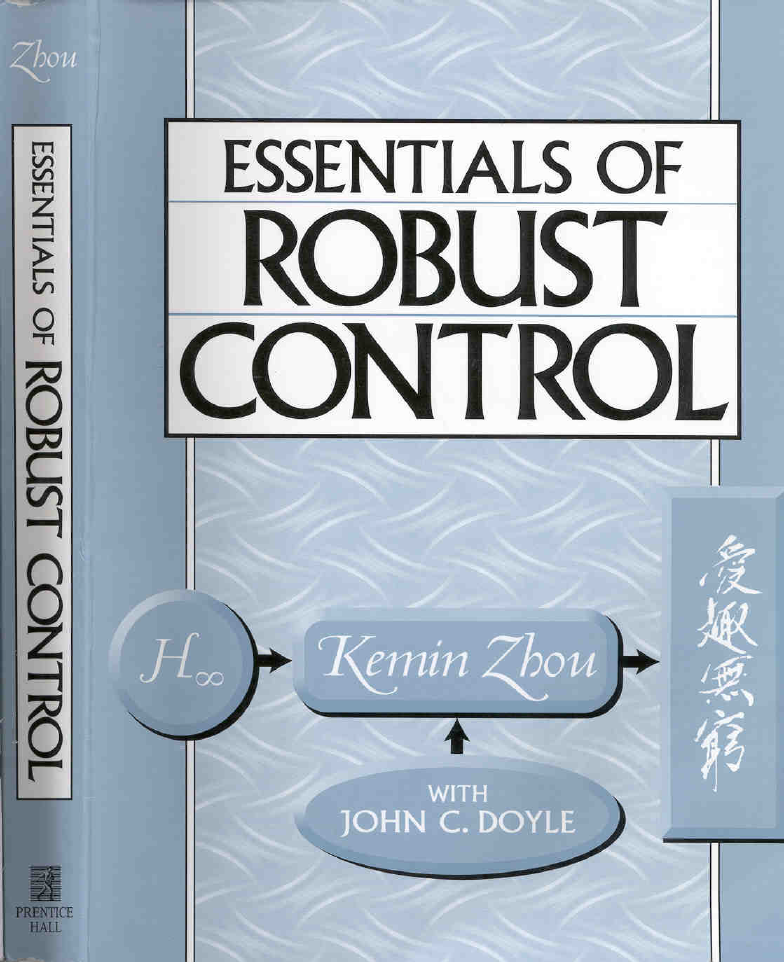
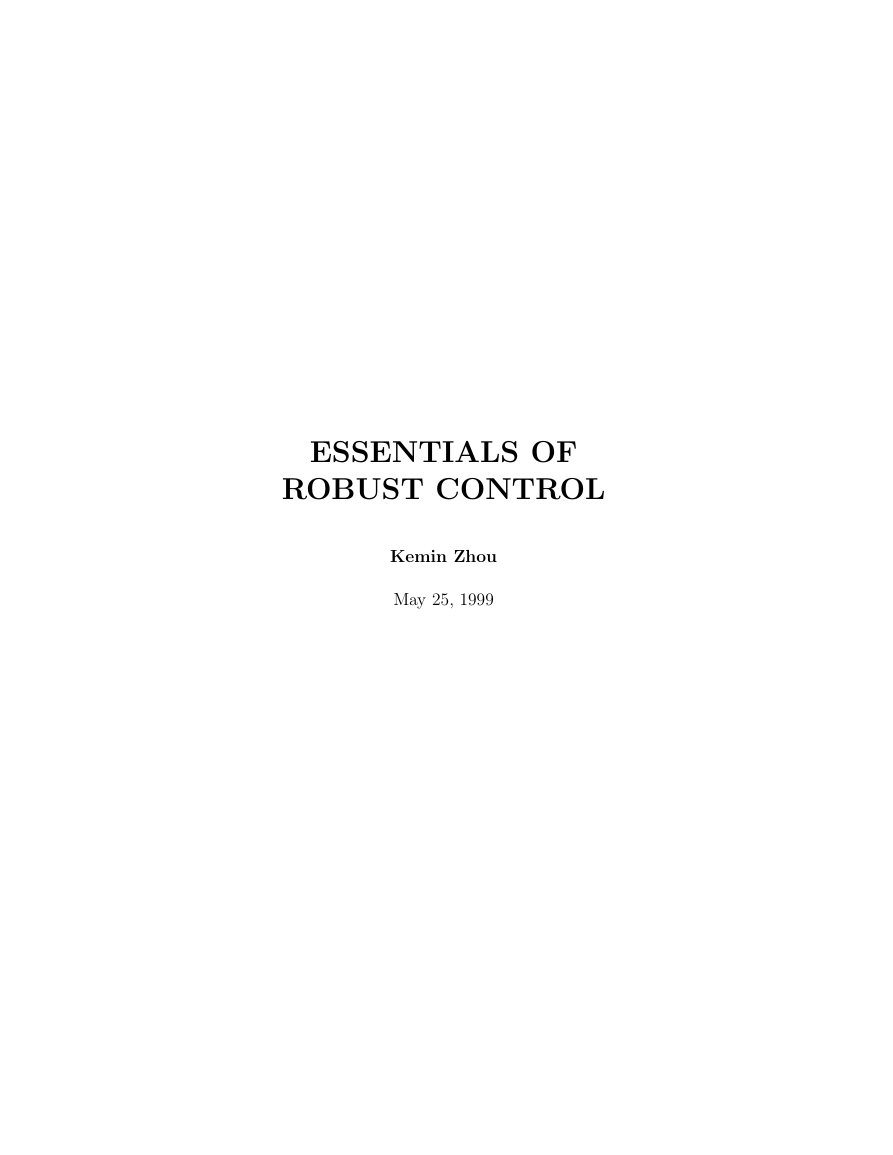
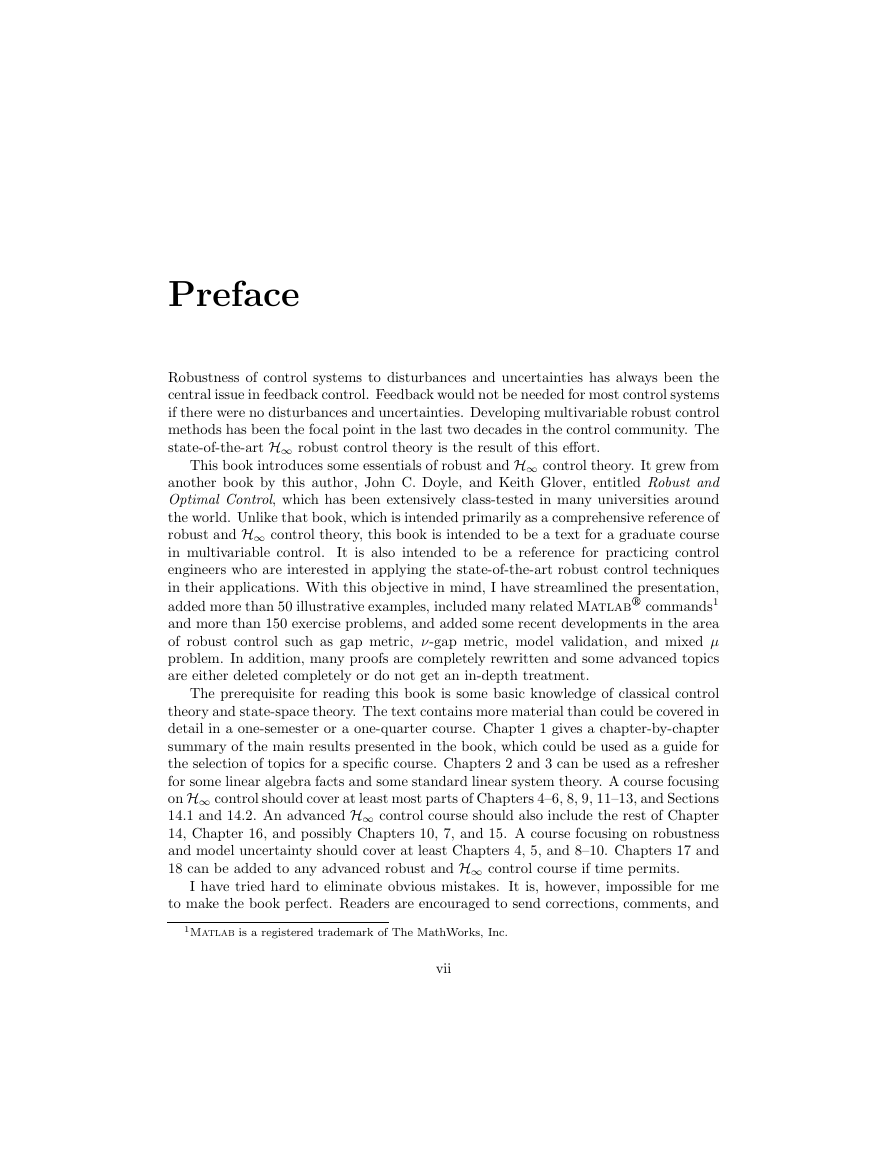

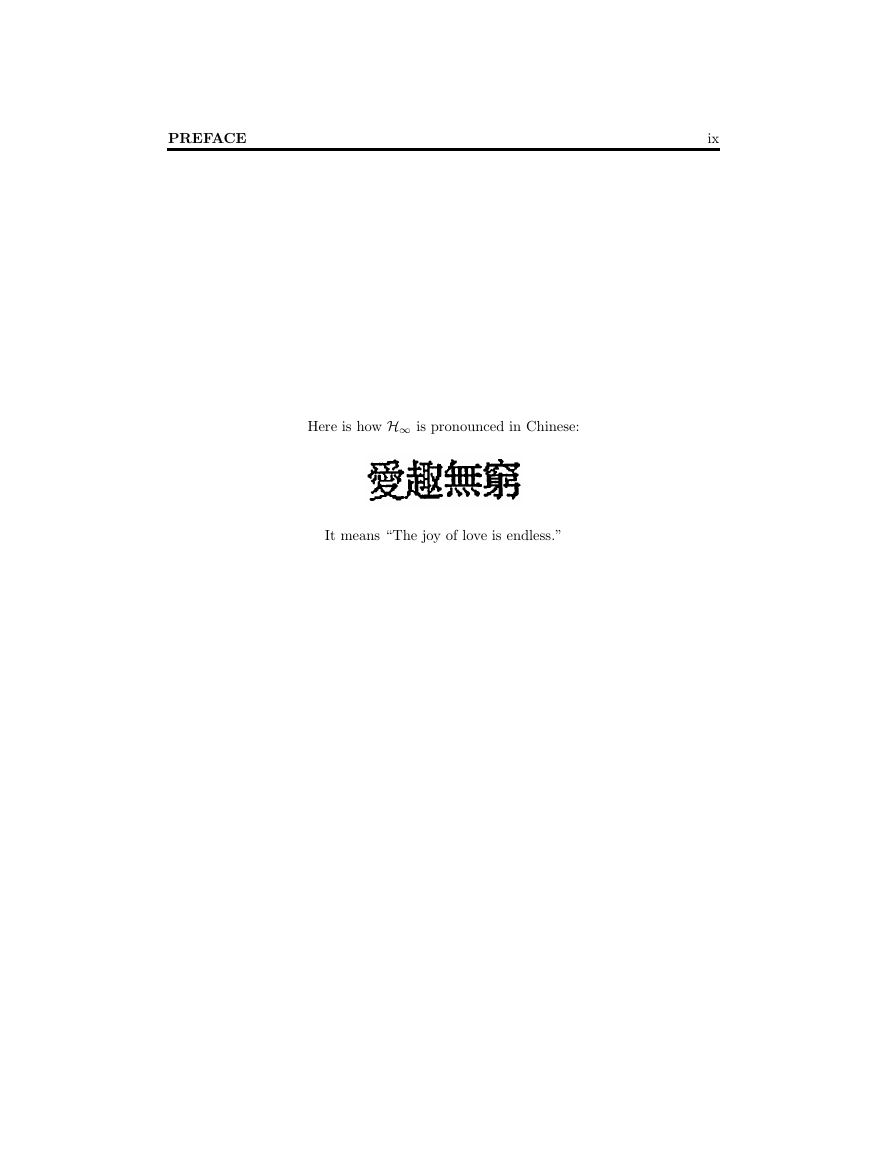

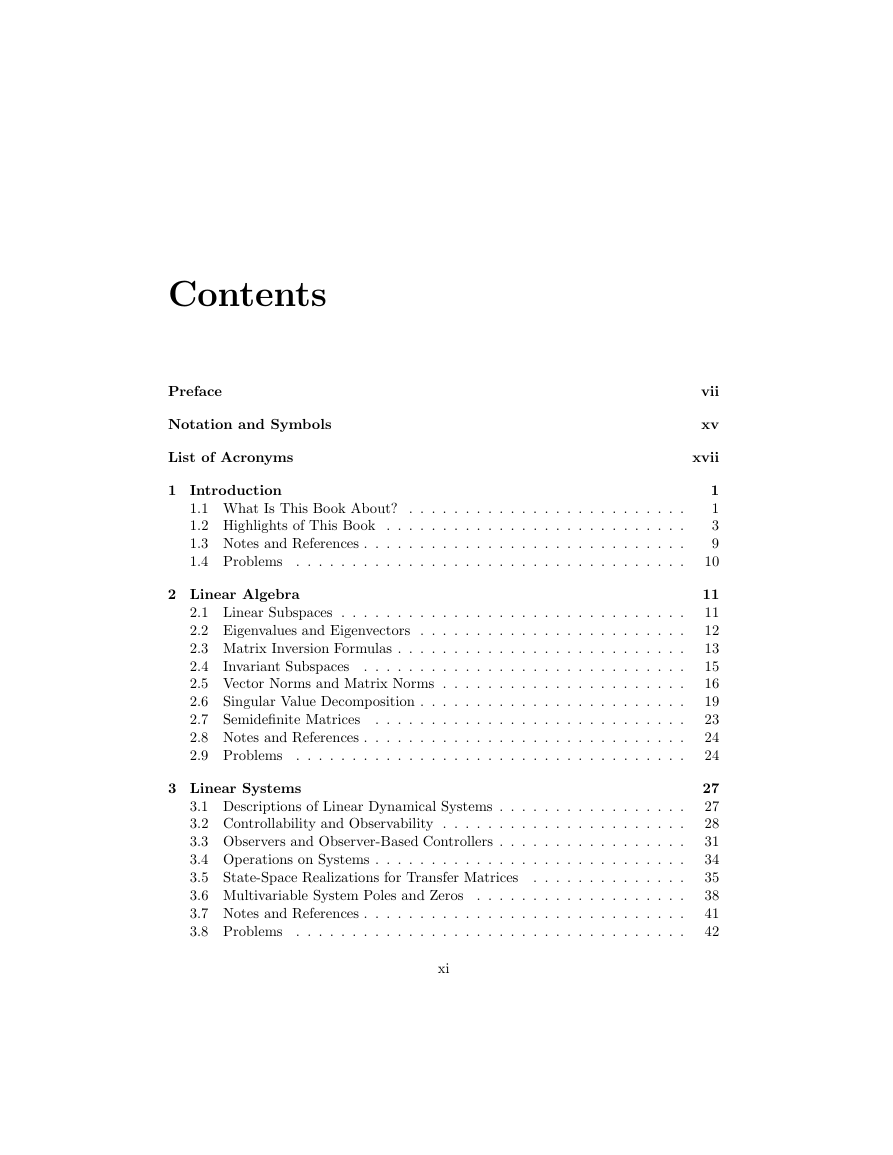









 2023年江西萍乡中考道德与法治真题及答案.doc
2023年江西萍乡中考道德与法治真题及答案.doc 2012年重庆南川中考生物真题及答案.doc
2012年重庆南川中考生物真题及答案.doc 2013年江西师范大学地理学综合及文艺理论基础考研真题.doc
2013年江西师范大学地理学综合及文艺理论基础考研真题.doc 2020年四川甘孜小升初语文真题及答案I卷.doc
2020年四川甘孜小升初语文真题及答案I卷.doc 2020年注册岩土工程师专业基础考试真题及答案.doc
2020年注册岩土工程师专业基础考试真题及答案.doc 2023-2024学年福建省厦门市九年级上学期数学月考试题及答案.doc
2023-2024学年福建省厦门市九年级上学期数学月考试题及答案.doc 2021-2022学年辽宁省沈阳市大东区九年级上学期语文期末试题及答案.doc
2021-2022学年辽宁省沈阳市大东区九年级上学期语文期末试题及答案.doc 2022-2023学年北京东城区初三第一学期物理期末试卷及答案.doc
2022-2023学年北京东城区初三第一学期物理期末试卷及答案.doc 2018上半年江西教师资格初中地理学科知识与教学能力真题及答案.doc
2018上半年江西教师资格初中地理学科知识与教学能力真题及答案.doc 2012年河北国家公务员申论考试真题及答案-省级.doc
2012年河北国家公务员申论考试真题及答案-省级.doc 2020-2021学年江苏省扬州市江都区邵樊片九年级上学期数学第一次质量检测试题及答案.doc
2020-2021学年江苏省扬州市江都区邵樊片九年级上学期数学第一次质量检测试题及答案.doc 2022下半年黑龙江教师资格证中学综合素质真题及答案.doc
2022下半年黑龙江教师资格证中学综合素质真题及答案.doc